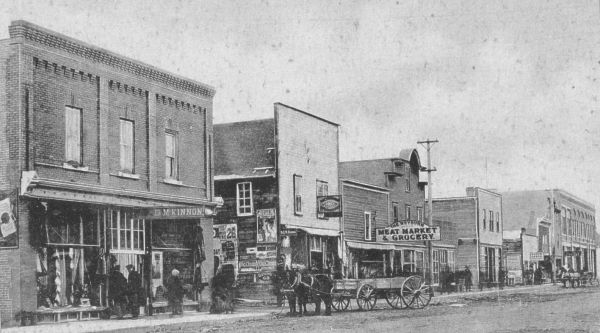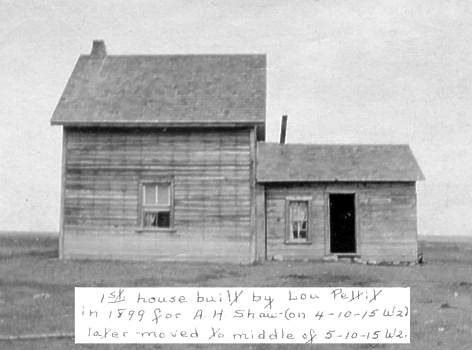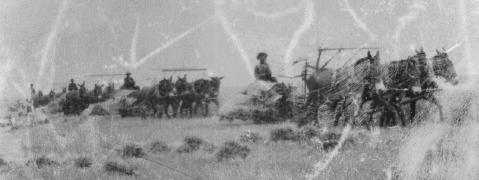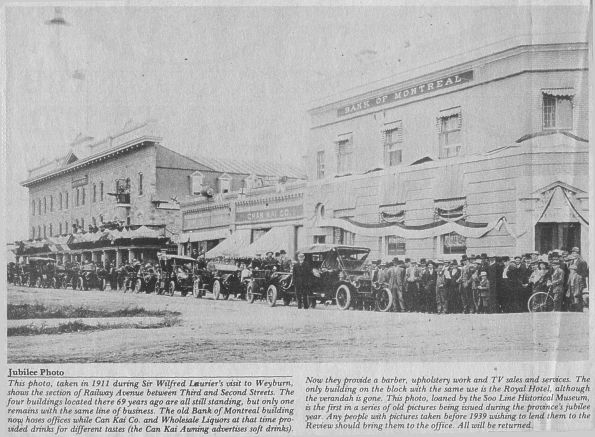|
The Story of Albert H.
Shaw
Albert Shaw was a prairie homesteader. He founded
Shaw’s Ranch near McTaggart in Assiniboia, North West Territories (now
Saskatchewan) in 1899.
Albert Shaw was born January
22, 1858 in Hamilton, Ontario. He married Edith Marsh on October 14, 1879.
Edith was born in England in 1856. Their only child Clara was born August
27, 1883. She married Will Douglas and brought five grandsons into Grandpa
Shaw’s life.
Albert’s older brother
Elmer Shaw settled at Abernathy, southwest of Indian Head, with his wife
Emily prior to the Louis Riel Red River Rebellion of 1885. This was twenty
years before Saskatchewan became a province.
Albert first came to Western
Canada in 1898. He came to Indian Head which, by this time, was a completely
settled area. Elmer drove Albert to Weyburn by horse and buggy. Once in
Weyburn, George Beischel drove Albert through areas north and west of the
city to find the most desireable available homestead.

Main Street in Weyburn
in 1902
Albert selected a homestead
site north of McTaggart and east of Yellowgrass, legally described as the
Southwest quarter of Section 4, Township 10, Range 15, West of the Second
Meridian. Elmer, acting as Albert’s agent, actually filed the application
for this homestead on May 13, 1899.
Albert returned in June
of 1899 with a boxcar load of settler’s effects including a team of horses,
a dozen chickens, lumber for a 12’x14’ shack and an organ.
Albert’s wife Edith and
daughter Clara (14) arrived later that summer, traveling by train to Moose
Jaw and Weyburn. Hughie Greig met them and drove them 12 miles over crooked
prairie trails to where Albert was erecting the shack.
At the time, the only house
along the trail belonged to Tom Jackson. It was located on the present
site of the Howard McTaggart farm.
They spent their first
few days in a tent, sleeping on bags of grain, until the shack was completed.
As the wood dried out in the shack, gaping cracks appeared through which
mosquitoes came in hordes.
It was a lonely time, even
for the chickens. Albert told how the chickens would come down the trail
to meet him when he came home.

By the time winter set in
they had a house, built by Lou Petit, and had broken 25 acres with the
horses and a walking plow in preparation for a crop the following year.
Church services were often
held at the Shaw house because of the organ. Their first Christmas was
spent at Charlie McKague’s. Transportation was a horse drawn stone boat
with a packing crate as a seat.
The year 1900 was so dry
very little of the wheat came up but the tufts of grain that did germinate
grew so well that the settlers were convinced that it was good farming
land.
Albert acquired six oxen
to pull the farm implements and in 1905 he obtained mule teams from the
USA. (Click picture for larger version, BACK to return.)
 His prosperous farm became
a showplace that was visited in 1911 by Sir Wilfred Laurier, 7th Prime
Minister of the Dominion of Canada. Due to a fire at the Weyburn Review,
this is the only picture of Laurier's visit.
His prosperous farm became
a showplace that was visited in 1911 by Sir Wilfred Laurier, 7th Prime
Minister of the Dominion of Canada. Due to a fire at the Weyburn Review,
this is the only picture of Laurier's visit.

|